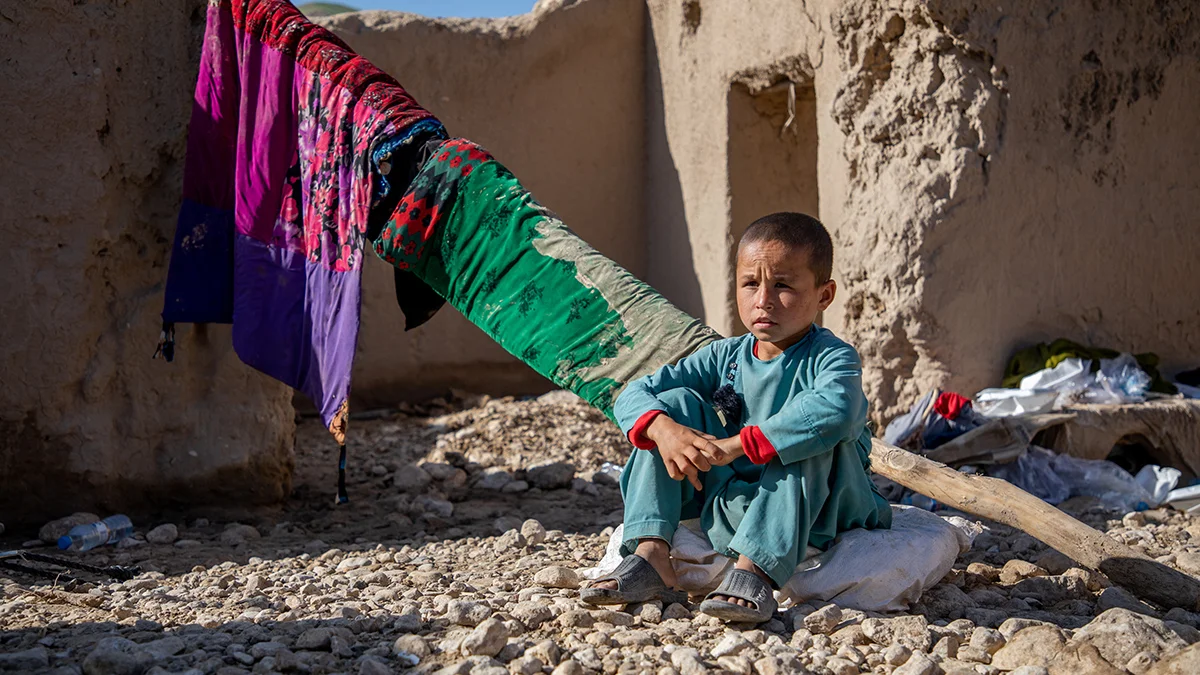UNICEF calls for increased investment in disaster preparedness and climate resilience as the recent floods provide a grave forewarning of potential future climate hazards.
Tens of thousands of children in Afghanistan remain affected by ongoing flash floods, especially in the northern provinces of Baghlan and Badakhshan and the western province of Ghor. The most recent floods claimed nearly 350 lives – including at least a dozen children. Over 7,800 homes were damaged or destroyed and over 5,000 families have been displaced.
UNICEF immediately trucked in safe water and distributed hygiene kits containing soap, buckets, jerry cans, toothbrushes and more, and mobilized hygiene promoters to educate communities on handwashing and safe water storage following the disaster. In addition, UNICEF mobilized mobile health and nutrition teams to treat the injured and ill, and brought warm clothing, blankets, and household items and cooking equipment for families who lost possessions. UNICEF also provided immediate cash assistance through its rapid response mechanism to help families recover and provide for their basic needs.
The recent extreme weather in Afghanistan has all the hallmarks of the intensifying climate crisis — some of the affected areas experienced drought last year. Reports suggest extreme weather events in the country are increasing in frequency and ferocity, resulting in the loss of lives and livelihoods and significant damage to infrastructure.
“The international community must redouble efforts and investments to support communities to alleviate and adapt to the impact of climate change on children,"said Dr. Tajudeen Oyewale, UNICEF Representative in Afghanistan. "At the same time, UNICEF and the humanitarian community must prepare ourselves for a new reality of climate-related disasters. The growing number and severity of extreme weather events will require UNICEF and other humanitarian actors to step in with even more rapid and large-scale humanitarian responses. But this can only be possible with strengthened preparedness measures, such as greater pre-positioning of emergency relief supplies and enhanced coordination with partners.”
“UNICEF must simultaneously concentrate on building communities’ resilience to adapt to climate and environmental shocks in order to reduce their dependence on humanitarian aid.”
Afghanistan ranks 15th out of 163 nations on UNICEF’s 2021 Children's Climate Risk Index.. This means that not only are climate and environmental shocks and stresses predominant across the country, but children here are particularly vulnerable to their effects compared with elsewhere in the world. However, although children in Afghanistan are particularly vulnerable to the effects of climate change, their country is among the least responsible for creating the problem. In contrast, the 10 highest emitting countries of CO2 collectively account for nearly 70 per cent of global emissions.
“Heavy rainfall shouldn’t immediately spell disaster for Afghanistan’s children," said Dr. Oyewale. We need to prioritise the unique needs of children in decision-making and address these needs now to protect children from future disasters while simultaneously investing in the basic services they rely on. UNICEF is grateful to all partners for their generous support, enabling UNICEF Afghanistan to deliver for children and their families in Afghanistan.”






